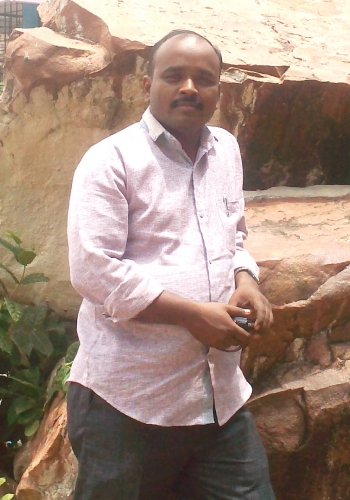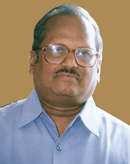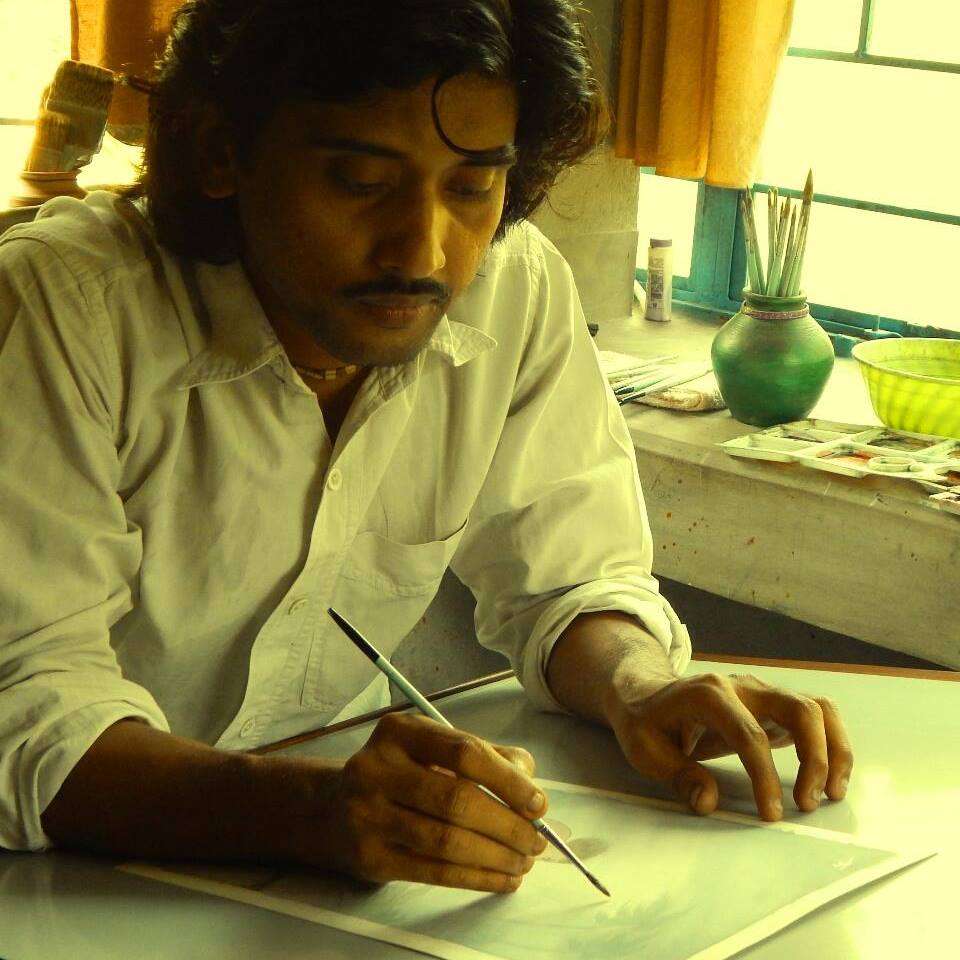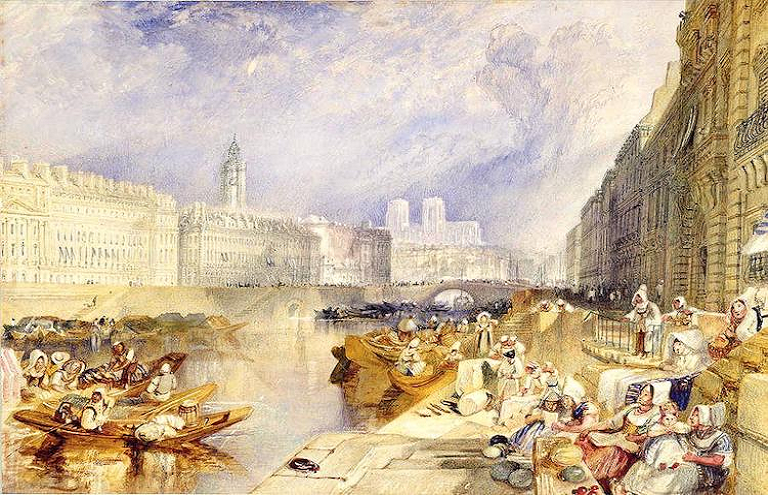
Watercolor painting is one of the most accessible and versatile forms of art. Almost everyone has tried painting with these brightly colored pigments at some point in their life, whether it be in art class as a kid or just trying to discover this medium as an adult. Despite this deep familiarity, most people don’t know its rich history and some of the iconic watercolor artists who realized the true potential of the medium.
Having its roots in Paleolithic Europe, watercolor painting gained some popularity in manuscript illumination in the Middle Ages where artists illustrated scenes and decorative designs in the margins of handwritten books using watercolors.
However, it was the Renaissance during the late 15th century which brought the watercolor painting into the spotlight wherein it went beyond the decorative manuscripts and found a place into the works of prolific artists like Albrecht Dürer. He used watercolor heavily for his sketches, informal drawings and other art creations. Also, it was during this era that watercolor painting was adopted by the elite class as part of their overall education which further popularized the medium. Still, watercolor painting was not taken as seriously as oil painting or printmaking.
In the 19th century watercolors witnessed a major bump in its status. This was a time wherein there was general excitement about worldwide exploration, and various wildlife and nature illustrations were used for scientific publications. Famous artist and ornithologist John James Audubon used watercolor painting to help bring his detailed drawings of birds to life and began an artistic tradition that still lives on today—field guides and scientific publications as illustrated with watercolors.
Audubon had a very restrained, technical approach to his work, while other famous watercolor artists further explored and found a voice in the medium, such as renowned American artist Georgia O’Keeffe who played with the fluidity of these pigments to create paintings that are magnificent fields of intense color.
Let’s understand the appeal of this versatile medium today by exploring some of the most remarkable watercolor artists and their creations:
-
Albrecht Dürer (1471 – 1528)
A man of many talents, Dürer was one of the leading figures of the Northern Renaissance who created masterpieces in varied mediums including paintings, drawing, woodcuts, and engravings. In terms of watercolor, he was considered one of the first eminent European painters to use the medium in his artworks. This took the form of sketches of mountains, rivers and other sceneries of nature, and anticipated the art of landscape painting. In fact, his precise and meticulous studies of nature, many done while convalescing in his early 30s, are as modern and advanced today as when they were originally painted.
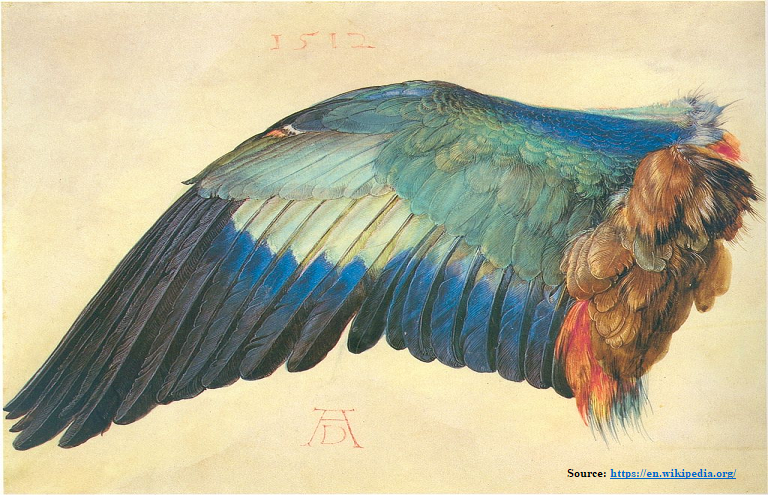
-
John James Audubon (1785 – 1851)
He was an American ornithologist, naturalist, and painter. His extensive studies documenting American birds and exhaustive illustrations depicting the birds in their natural habitats made him famous across the world. His most extensive creation of ‘Birds of America’ is considered to be the archetype of wildlife illustration and is lauded as being one of the best ornithological books ever produced. Printed in the 1820s, it contains nearly 435 life-size watercolor paintings of North American birds, all reproduced from hand-engraved plates. His attempt to document the avifauna also began the artistic tradition of naturalistic renderings being completed with watercolor.
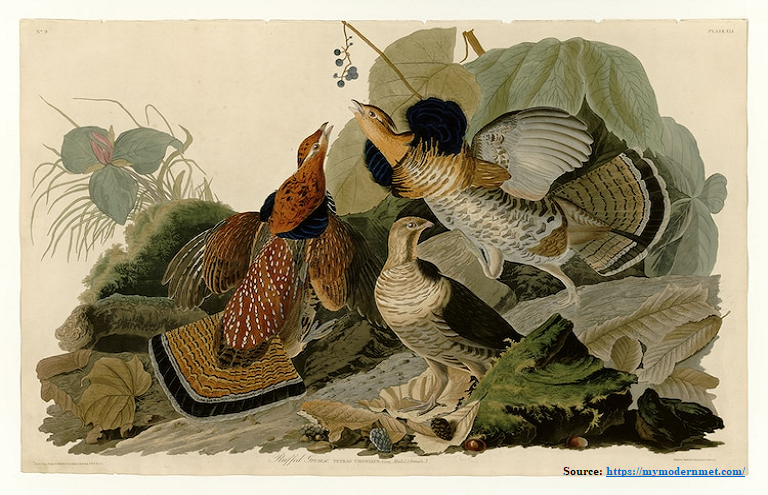
-
William Blake (1757 – 1827)
An English poet, painter, and printmaker, William Blake was largely unrecognized during his lifetime. However, today he is revered for both his artistic talent and profound poetry. He began to write and paint during his early years, and experimented with various mediums such as engraving, prints, illustrations, and paints. Later, he also tried his hands at watercolor painting and eventually perfected his technique of ‘fresco’ which is basically monotype printing wherein he painted a design on a flat surface before applying it to paper. Finally, every design was individually finished in ink and watercolor, ensuring that each image was one of a kind.
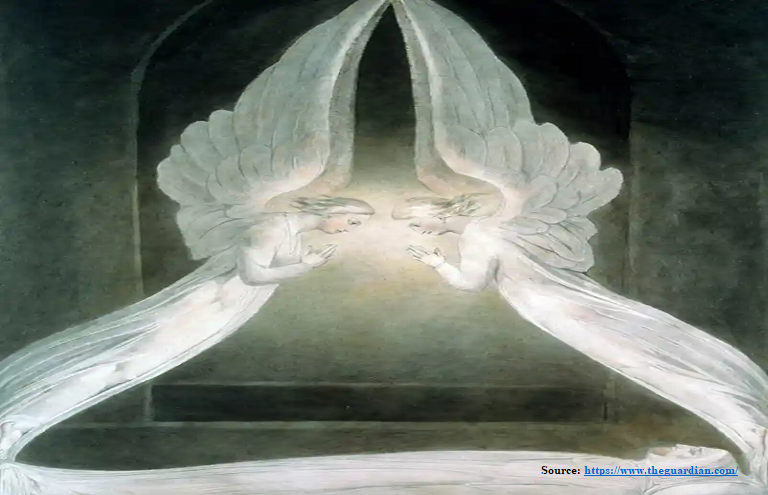
-
J.M.W. Turner (1775 – 1851)
Turner was an English Romantic painter, printmaker as well as a famous watercolorist. He is known for his expressive colorisations of travel chronicles, dynamic landscapes,and turbulent violent marine paintings. He devoted his entire life to his art and left more than 19,000 artworks of watercolors, drawings, and oils. There was a significant surge in watercolor painting production in the last decade of his working life.
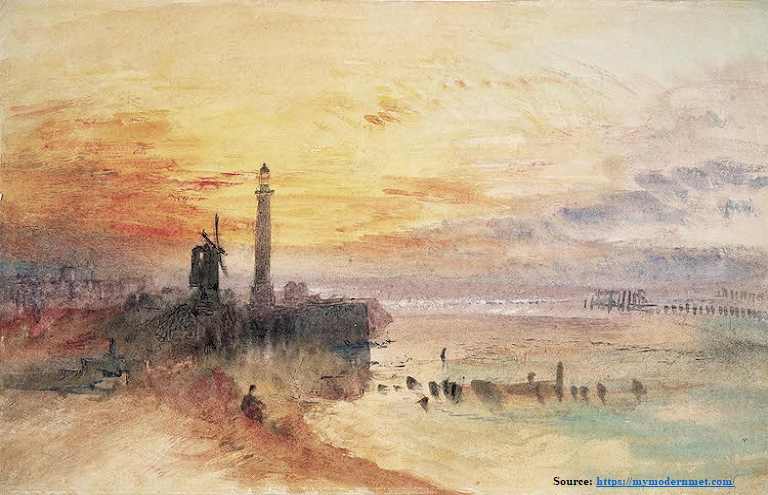
-
Elizabeth Murray (1815 – 1882)
A famous British watercolorist, Elizabeth Murray learned watercolor painting from her father, Thomas Heaphy, who was also a watercolorist. She primarily painted portraits and landscapes of the Canary Islands, where she lived for ten years and from her travels along with her father to Rome, Morocco and other places. Her works are known for her ethereal color choices, comprising mainly of brown, violet, blue, black, red, gold and olive, along with tan colors to give them a warm-toned appearance.
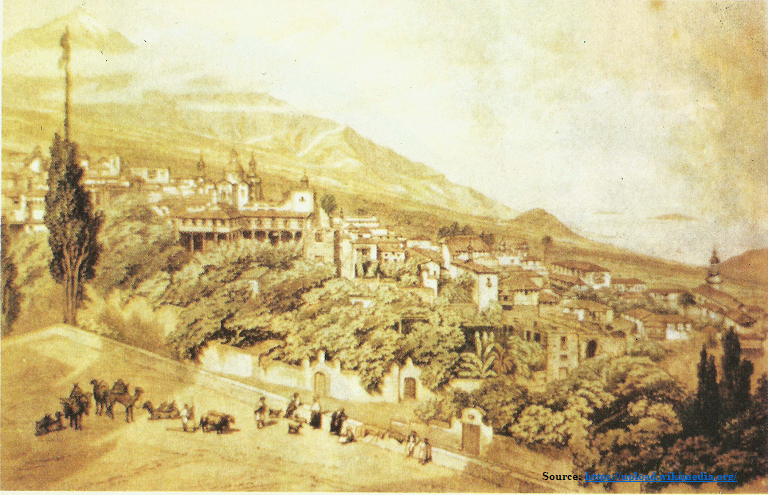
-
Thomas Moran (1837 – 1926)
An American painter and printmaker of the Hudson River School (New York), Thomas Moran is famous for his mesmerizing landscape watercolor paintings, particularly the ethereal image of Yellowstone National Park, which was also pivotal in ensuring that Congress established the area as a national park.
His gigantic canvases not only depict the grandeur and immensity of the Far West but also carry a complicated legacy in national popular culture.
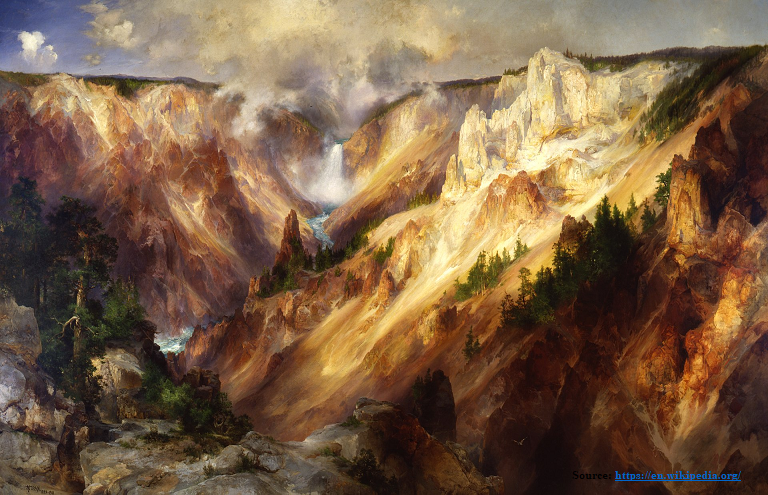
-
Winslow Homer (1836 – 1910)
He was a self-taught painter who followed the artistic practice of being in the moment and painting directly from life. He usually painted the idyllic, quiet scenes of everyday life, most of which he completed at home in Massachusetts as well as on his trips.

-
Georgia O’Keeffe (1887 – 1986)
Recognized as the ‘Mother of American modernism’, she was known for her paintings of enlarged flowers, New York skyscrapers, and New Mexico landscapes. She began experimenting with watercolors in her late 20s as a way to play with color, hues and composition. She produced much of her early work between 1916 to 1918 in Canyon, Texas, which were primarily watercolor self-portraits and landscapes featuring pink snow, green steam rising from a barren landscape.
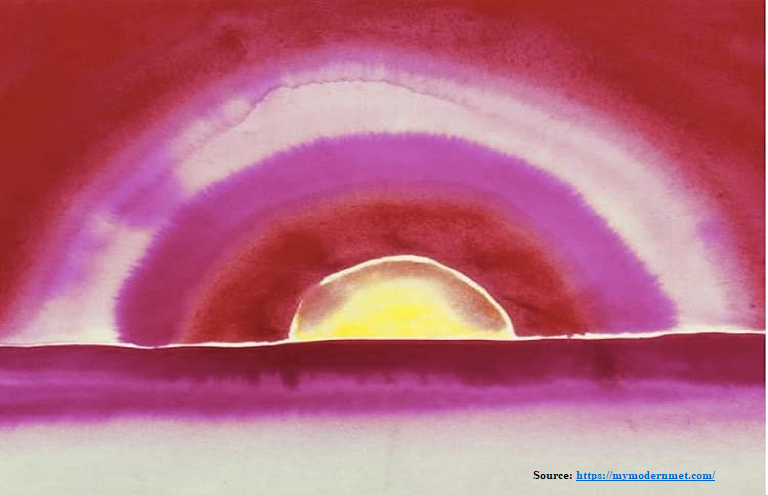
-
Paul Klee (1879 – 1940)
A Swiss-born artist, his individual painting style was strongly influenced by art movements including Expressionism, Cubism, and Surrealism. He was a member of the artist group named ‘Blaue Reiter’, which used their work as a way to express ‘spiritual truths’ with non-figurative art and color being an important part of the group’s aesthetic. His watercolor paintings were a means of experimentation in order to explore and understand his relationship with the ‘realm of color.’
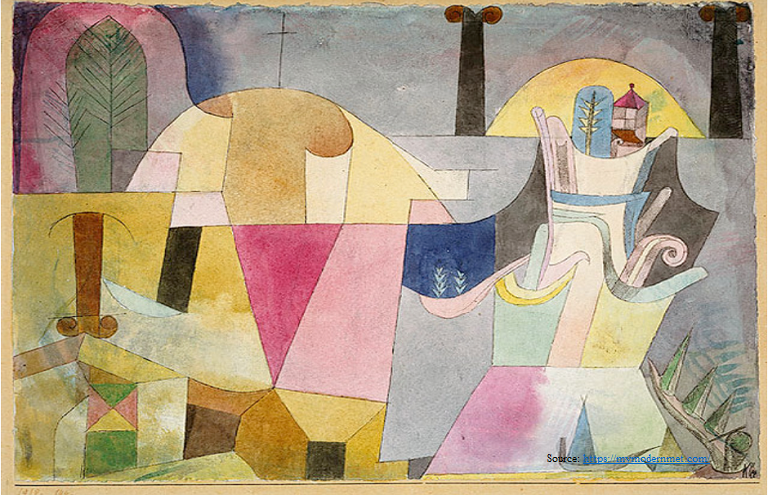
-
Reginald Marsh (1898 – 1954)
Most of his works have become synonymous with New York City. During the 1930s and 40s, he chronicled the everyday life of the bustling metropolis. In fact, crowded Coney Island beach scenes, vaudeville and burlesque parlors, women, and jobless men on the Bowery were some of his favorite subjects that reappear throughout his work. He had excellent observational skills which made his works a perfect fit for journalism, and he worked for The Daily News. Of watercolor, he said, “Watercolor I took up and took to it well, with no introduction.”

-
Andrew Wyeth (1917 – 2009)
He was the son of a well-known illustrator, N.C. Wyeth. Owing to his father’s guidance, Andrew mastered painting with watercolor at an early age. He had his first solo exhibition featuring all watercolor paintings at the young age of 20 years. Later on, he expanded his chosen media to egg tempera, but he continued to create watercolor landscapes inspired by his solitary walks in his hometown of Chadds Ford, Pennsylvania as well as Cushing, Maine.
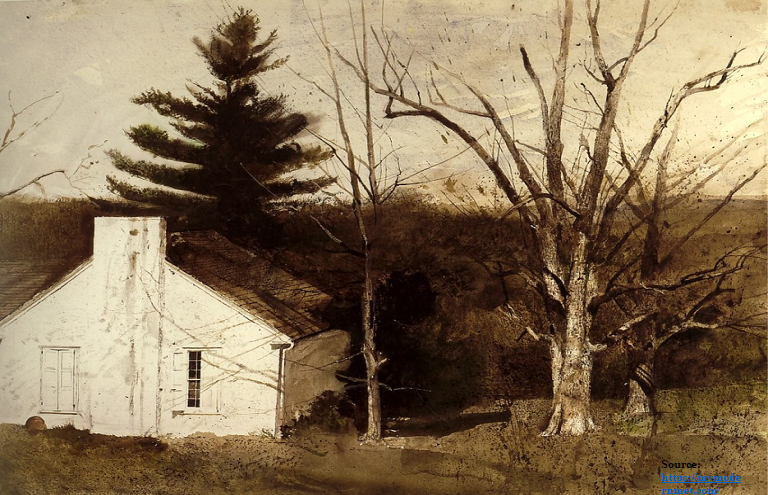
-
Edward Hopper (1882 – 1967)
Though Edward is known for his oil paintings such as the iconic Nighthawks, he was adept at painting with watercolors, too. While working in any media, his focus was the same to bring out the American experience as seen through landscapes.
“My aim in painting has always been the most exact transcription possible of my most intimate impressions of nature.”- Edward Hopper












